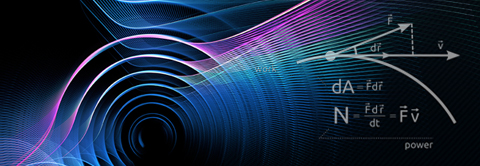| 날짜 | 2018-03-16 16:00 |
|---|---|
| 연사 | |
| 장소 | E6-2. 1st fl. #1323 |
Abstract:
van der Waals materials including graphene, hexagonal boron nitride and transition metal dichalcogenides (TMDCs) such as MoS2 and WSe2 have great potential for exploring the exotic quantum behaviors and realization of advanced optoelectronics devices. However, nature of 2D materials, extremely sensitive to extrinsic effects, hampered efforts to observe its intrinsic transport. Recently developed ‘van der Waals heterostructure device platform’ allows the atomically perfect interface, dramatic suppression of extrinsic scattering effects, resulting in the achievements of dramatic improvements in performance with long-term stability. Especially, hBN-encapsulation structure of TMDCs with multi-terminal with low contact resistance strategies enables the observation of intrinsic transports such as quantum oscillations and coupled spin-valley physics. Furthermore, van der Waals heterostructure offer an entirely new opportunity for exploring the emerging exotic quantum behaviors in two-dimension such as 2D superconductivity, charge density wave in NbSe2 and 1T-TaS2.
I will also talk about the van der Waals material based ultrafast optical optoelectronics. Especially, ultrafast light emitter in nanoscale is a critical component in the development of the high bandwidth on-chip optical interconnects for ubiquitous computing and Big data applications. However, previous technology faces the major challenges such as big footprint, high cost integration and difficulties of direct high speed electrical pumping. Here, I will talk the first electrically driven ultrafast graphene light emitter that exhibits the ultrafast light modulation up to ~ 4 GHz with broad optical bandwidth (400 ~ 1600 nm). Furthermore, atomically thin hexagonal boron nitride (hBN) encapsulation layers to graphene allow the stable and practical high performance even under the ambient condition as well as efficient direct electronic cooling via near-field coupling of hybrid plasmon-phonon polaritonic modes. Ultrafast and broadband graphene light emitter paves the way towards the realization of complete graphene-based ultrafast optical communications.
Contact: SunYoung Choi, (sunyoungchoi@kaist.ac.kr)
Center for Quantum Coherence in Condensed Matter, KAIST
Yongseop Kang (Mr.)
Manager, Administration Team of Department of Physics
Korea Advanced Institute of Science and Technology
Phone +82 (42) 350 2599
Cell phone +82 (10) 4288 6113
Email kangys@kaist.ac.kr







